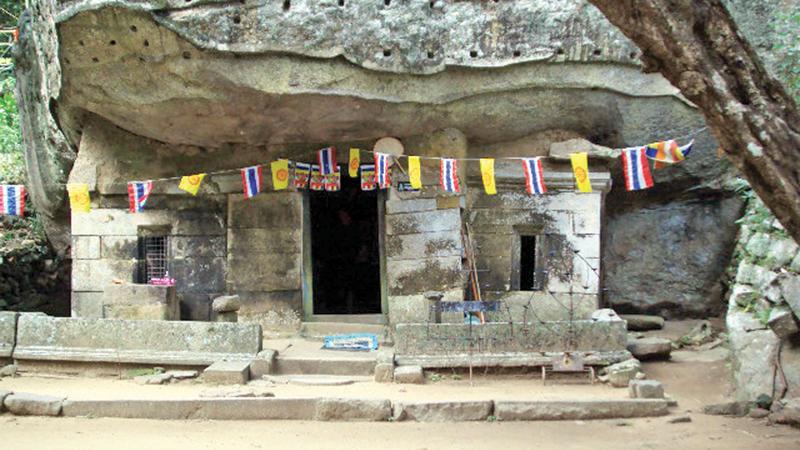
According to history, Arankele is a famous forest monastery where the last Arahant of Ceylon, Arahant Maliyadeva dwelt together with 12,000 other Arahants.
This monastery is at Godalavillage, Kumbukwewa in the Ganewatta Divisional Secretariat division in the Kurunegala district. You have to take the Kurunegala-Dambulla road to Ibbagamuwa and from there the Madagalla road, get off at the Godagala junction and proceed through the Hipawwaa village and reach the site.
The monastery had been the austere abode of a sect of recluse bhikkhus who had been attracted to the site because of its isolation and seclusion. Today, it is an archaeological site containing the ruins of the ancient forest monastery.
History records that King Saddhatissa, brother of King Dutugemunu constructed a monastery complex and offered to the Maha Sanga. There are evidence to say that various constructions had been done at the site during the reigns of King Jettatissa, King Mahasen and King Dhathusena too.
After the end of the Anuradhapura kingdom, this site had been covered with jungle for a long time. In 1922, the Department of Archaeology identified it as a historical site and conserved it.
Then Commissioner of Archaeology H.C.P. Bell had conducted research on the site in 1890.
The significance of the Arankele monastery is its tranquility and how the natural formation of caves has been used for the hermit lifestyle of the bhikkhus. It was evident in the existence of meditation halls, stone faced double platform structures. Scholars believe that they were used for meditation, ceremonies and teaching.
The building at the entrance of the Arankele site has been identified as a “Jantagara” or “hot water bath” which is 100 feet in length and 60 feet in breadth. Among the other ruins that have been identified are meditating promenades, ponds and winding pathways. The main promenade (sakmanmaluwa -walking path) is 2,100 feet long.
Four streams run across this promenade. Four stone bridges have been constructed at these places. Some of these ambulatories are believed to have been roofed. These paths rise in an easy gradient - sometimes a few steps at a time.
These were the paths that once were walked upon by Arahants in deep meditation. Circular roundabouts paved with stones can be seen at some places. These roundabouts were built so that the Arahants walking in deep meditation may not collide with one another.
A worker of the Archaeological Department showed us three ancient wells believed to have been dug by the Arahants themselves. They are still in use by meditating bhikkhus of the monastery.
There are also vestiges of grinding stones that had been used to prepare herbal medicines.
If a Dayaka wants to meet a bhikkhus engaged in meditation, there is a building for the purpose. It is called “Sammuka Lena”(Meeting cave) which is a 15 x 15 feet building.
Buildings are surrounded by water troughs believed to keep the interior of the building cool.
There are three bathing ponds of which only one is completely restored.
According to an inscription at the Anuradhapura museum, kings had helped the monasteries. King Nissankamalla (1187 A.D. -1196 A.D.) had very often provided alms to the bhikkhus of the monastery
The cave where Arahant Maliyadeva dwelt is a three roomed abode. The entrance was through a wooden door. Each room contained a window opening to the front and a stone slab bed. This was his abode surrounded by the forest, wild animals, birds, reptiles and insects.
Ven. Udubaddawe Dhammathiloka Thera, Chief incumbent of Maveedalupotha Siri Sugatha Senasuna is the present head of the Arankele monastery.

